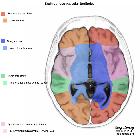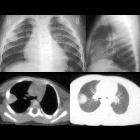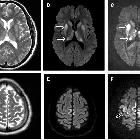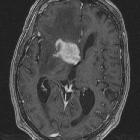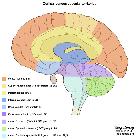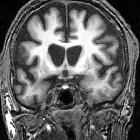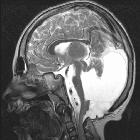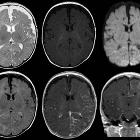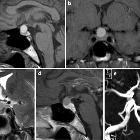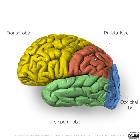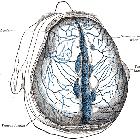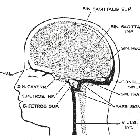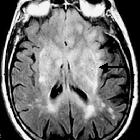central nervous system curriculum
The central nervous system curriculum is one of our curriculum articles and aims to be a collection of articles that represent the core central nervous system knowledge.
Definition
Topics pertaining to the intracranial content (brain, pituitary, dura, intracranial vasculatures). There will be some overlap between this curriculum and the head and neck curriculum and the pediatric curriculum.
Anatomy and development
An understanding of the anatomy of relevant structures is essential. Core anatomical topics include:
- anatomy of the brain
- vascular anatomy of the brain
- cerebral vascular territories
- circle of Willis
- intracranial arteries
- intracranial arteries-variants
- cerebral veins
- dural venous sinuses
- superficial cerebral veins
- superficial middle cerebral vein (Sylvian vein)
- superior anastomotic vein (of Trolard)
- inferior anastomotic vein (of Labbe)
- deep cerebral veins
- development of the central nervous system
Radiological examinations
Imaging techniques relevant to imaging of the central nervous system include:
- MRI
- CT and CT angiography (CTA)
- digital subtraction angiography (DSA)
- cranial ultrasound
- skull x-ray
Neonatal hypoxic-ischemic brain injuries
- hydranencephaly and porencephaly
- periventricular-intraventricular hemorrhage (PIVH)
- periventricular leukomalacia (PVL) and subcortical leukomalacia
- hypoxic-ischemic encephalopathy of the term newborn
Malformations and genetic syndromes
Cortical malformations
Proliferative disorders
- microencephaly
- megalencephaly
- macrocephaly
- cortical tubers
- cortical dysplasias
- balloon-cell dysplasia
- gangliogliomas
- gangliocytomas
- dysembryoplastic neuroepithelial tumors (DNET)
Migration disorders
Organization disorders
- polymicrogyria
- schizencephaly
- focal cortical dysplasia
- Taylor type cortical dysplasia
- cortical dysplasia(s) without balloon-cells
- Taylor type cortical dysplasia
- microdysgenesis
For more detail see malformations of cortical development classification.
Cerebellar malformations
- Dandy-Walker complex
- cerebellar hypoplasia
- cerebellar agenesis
- rhombencephalosynapsis
- Lhermitte-Duclos syndrome
- Joubert syndrome
Dysraphic malformations
Other malformations
- hypo or agenesis of the corpus callosum
- holoprosencephaly
- septo-optic dysplasia
- arhinencephaly
- Chiari malformations
Phakomatoses
- neurofibromatosis
- neurofibromatosis type 1 (NF1) (von Recklinghausen disease)
- neurofibromatosis type 2 (NF2)
- tuberous sclerosis (Bourneville-Pringle disease)
- ataxia telangiectasia
- Sturge-Weber syndrome (encephalotrigeminal angiomatosis)
- von Hippel-Lindau disease (retinocerebellar angiomatosis)
- incontinentia pigmenti (Bloch-Sulzberger syndrome)
- basal cell nevus syndrome (Gorlin-Goltz syndrome)
- Wyburn-Mason syndrome (Bonnet-Dechaume-Blanc syndrome)
- encephalocraniocutaneous lipomatosis
- hypomelanosis of Ito
- Nijmegen breakage syndrome
- epidermal nevus syndrome
- Schimmelpenning syndrome
- phacomatosis pigmentokeratotica
- nevus comedonicus syndrome
- angora hair nevus syndrome
- Becker nevus syndrome
- Proteus syndrome
- type 2 segmental Cowden disease
- CHILD syndrome
- FGFR3 epidermal nevus syndrome
- neurocutaneous melanosis
- progressive facial hemiatrophy (Parry-Romberg syndrome)
- PHACE syndrome
- Cowden disease/COLD syndrome
- Gomez-Lopez-Hernandez syndrome
Metabolic and toxic CNS diseases
Metabolic encephalopathies
Inborn errors of metabolism
- Wilson disease
- leukodystrophies
- lysosomal storage diseases
- peroxisomal disorders
- mitochondrial dysfunction
- amino acid metabolism disorders
- unknown mechanism / others
- adult-onset leukoencephalopathy with axonal spheroids and pigmented glia
- Alexander disease
- congenital muscular dystrophies (Fukuyama type)
- cystic leukoencephalopathy without megalencephaly
- glutaric aciduria
- type I glutaric aciduria
- type II glutaric aciduria
- L-2-hydroxyglutaric aciduria
- Labrune syndrome
- leukoencephalopathy with brainstem and spinal cord involvement and lactate elevation
- megalencephalic leukoencephalopathy with subcortical cysts
- Nasu Hakola disease
- Pelizaeus-Merzbacher disease
Toxic encephalopathy
Alcoholism-related
- Marchiafava-Bignami disease
- Wernicke encephalopathy (vitamin B1 deficiency)
- osmotic myelinolysis (central pontine myelinolysis)
- hepatic encephalopathy
Others
- carbon monoxide intoxication
- toluene intoxication
- methanol intoxication
- ethylene glycol intoxication
- inhaled heroin pyrolysate ("chasing the dragon")
- methotrexate-related leukoencephalopathy
Inflammatory demyelinating diseases
- clinically isolated syndrome (CIS)
- radiologically isolated syndrome (RIS)
- multiple sclerosis (MS)
- neuromyelitis optica (NMO) (Devic disease)
- acute disseminated encephalomyelitis (ADEM) and acute hemorrhagic encephalomyelitis (AHEM)
- tumefactive demyelinating lesions
- transverse myelitis
- chronic inflammatory demyelinating polyneuropathy (CIDP)
- Guillain-Barre Syndrome (GBS)
- acute inflammatory demyelinating polyradiculoneuropathy (AIDP)
- axonal subtypes
- acute motor axonal neuropathy (AMAN) (Chinese paralytic syndrome)
- acute motor-sensory axonal neuropathy (AMSAN)
- regional GBS syndromes
Epilepsy
- general value of CT, MRI and fMRI
- mesial temporal sclerosis (MTS)
Brain tumors and tumor-like lesions
- intra vs extra-axial location
- DWI, PWI, MRS of brain tumors
Classification
1: Neuroepithelial tumors
- astrocytoma (WHO grade II)
- anaplastic (malignant) astrocytoma (WHO grade III)
- glioblastoma (WHO grade IV)
- pilocytic astrocytoma
- subependymal giant cell astrocytoma
- pleomorphic xanthoastrocytoma
- oligodendroglioma
- ependymoma
- subependymoma
- mixed gliomas
- gliomatosis cerebri (WHO grade IV)
- choroid plexus papilloma
- choroid plexus carcinoma
Neuronal and mixed neuronal-glial tumors
- gangliocytoma
- ganglioglioma
- central neurocytoma
- dysembryoplastic neuroepithelial tumor (DNET)
- olfactory neuroblastoma (esthesioneuroblastoma)
Pineal tumors
Embryonal tumors
2: Tumors of the peripheral nerves
- schwannoma (neurinoma, neurilemoma)
- schwannomatosis
- neurofibroma
- circumscribed neurofibroma
- plexiform neurofibroma
- malignant schwannoma
3: Meningeal tumors
- meningioma
- atypical meningioma
- anaplastic (malignant) meningioma
- non-meningothelial primaries
- CNS hemangiopericytoma
- CNS fibrous histiocytoma
- meningeal sarcomatosis
- CNS malignant melanoma
4: Lymphatic and hematopoietic tumors
- primary malignant lymphoma
- plasmacytoma (CNS involvement)
5: Germ cell tumors
- germinoma
- CNS embryonal carcinoma
- CNS yolk sac tumor
- choriocarcinoma
- intracranial teratoma
- mixed germ cell tumors
6: Tumors of the sellar region
7: Metastases to the brain
8: Intracranial extensions from the skull
- paraganglioma (chemodectoma) Glomus jugulare tumor
- chordoma
- chondroma
- chondrosarcoma
- carcinoma
- metastases
9: Non-neoplastic mass lesions and cysts
- epidermoid
- dermoid
- colloid cyst of the third ventricle
- neuroglial cyst
- Rathke cleft cyst
- granular cell tumor (choristoma, pituicytoma)
- hypothalamic neuronal hamartoma
- nasal glial heterotopia
- plasma cell granuloma
Vascular Lesions
Stroke: diagnosis and therapy
- pathophysiology of ischemic and hemorrhagic stroke
- cardiovascular conditions leading to ischemia and stroke
- imaging patterns of stroke
- early CT signs of acute cerebral ischemia
- conventional MR Imaging findings
- CT perfusion, CTA
- diffusion-weighted MR imaging (DWI)
- MRA and MR perfusion
- ischemic penumbra
- stroke therapy and outcome
Spontaneous intracranial hemorrhage
- aneurysm rupture
- other non-traumatic causes of subarachnoid hemorrhage
- subdural hematoma
- epidural hematoma
- intracerebral hematoma
Vascular anomalies and malformations
- hemangioma
- arteriovenous malformation
- dural AV fistula
- carotid sinus cavernous fistula
- aneurysms
- arterial
- venous
- developmental venous anomaly (DVA)
Venous thrombosis
Vascular neurointerventional procedures
- indications
- basic techniques
Infectious diseases of the CNS
Classification
- meninges
- cerebritis and brain abscess
- ventriculitis (ependymitis)
- choroid plexitis
- rhombencephalitis
- cerebellitis
Granulomatous inflammatory diseases
Bacterial infections
- CNS listeriosis
- CNS nocardiosis
- CNS tuberculosis
- Lyme disease
- neurosyphilis
- Rocky Mountain spotted fever
Fungal infections
Parasitic infections
- cerebral amoebiasis
- cerebral malaria
- cerebral sparganosis
- neurocysticercosis
- neurohydatidosis
- neurotoxoplasmosis
Viral infections
- Eastern equine encephalitis
- enterovirus rhombencephalitis
- flavivirus encephalitis
- herpes virus family
- HIV CNS manifestations
- JC virus
- measles encephalitis
- Nipah virus (NiV) encephalitis
- rabies encephalitis
Prion infections
- Creutzfeldt-Jakob disease (sporadic, variant, familial and iatrogenic)
- fatal familial insomnia
- Gerstmann-Straussler-Scheinker disease
- kuru
- variably protease sensitive prionopathy
AIDS imaging and current therapy effects
CNS trauma
- skull fractures
- perforating injuries
- epidural hematoma
- acute subdural hematoma
- chronic subdural hematoma
- traumatic subarachnoid hemorrhage
- brain contusion
- brain edema
- diffuse axonal injuries
- hemorrhage dating with MRI and CT
- post-traumatic residues
Neurodegenerative diseases
Synucleinopathies
- diseases with Lewy bodies
- multiple systemic atrophy (MSA)
- Shy-Drager syndrome
- MSA-P (striatonigral degeneration)
- olivopontocerebellar atrophy (MSA-C)
Tauopathies
- Alzheimer disease
- typical/classical Alzheimer disease
- variant (e.g. posterior cortical atrophy)
- chronic traumatic encephalopathy (CTE)
- corticobasal degeneration
- frontotemporal lobar degeneration (FTLD) (not all are tau)
- Pick disease
- progressive supranuclear palsy (PSP)
Cerebral amyloidosis
- cerebral amyloid angiopathy (CAA)
- transthyretin-associated cerebral amyloidosis
- neuronal intranuclear hyaline inclusion disease (NIHID)
Others
- spinocerebellar ataxias
- Huntington disease
- hereditary spastic paraplegia
- amyotrophic lateral sclerosis (ALS)
- clinically unclassifiable parkinsonism (CUP)
- Unverricht-Lundborg disease
Siehe auch:
- Developmental Venous Anomaly
- Meningeom
- Rathke Zyste
- intrakranielle arterielle Gefäßanomalien
- Pilozytisches Astrozytom
- Arteria cerebri media
- Gliomatosis cerebri
- Cerebellum
- Sinus sigmoideus
- Intrazerebrale Blutung
- Glioblastoma multiforme
- Chondrosarkom
- Korsakow-Syndrom
- Chiari-Malformation Typ 1
- Tuberöse Sklerose
- Arteria cerebri anterior
- Sinus durae matris
- Zentrale pontine Myelinolyse
- Hirnabszess
- Arteriovenöse Malformation
- Sinusthrombose
- Chordom
- Subarachnoidalblutung
- Ependymom
- Hypophyse
- Progressive supranukleäre Blickparese
- subdurales Hämatom
- Sinus transversus
- Hämangiom
- Glomus caroticum Tumor
- Neurozystizerkose
- Arnold-Chiari-Malformation Typ 2
- Sturge-Weber-Krabbe-Syndrom
- Neurosarkoidose
- Oligodendrogliom
- Gangliogliom
- Arteria cerebri posterior
- Hirnödem
- Schwannom
- epidurales Hämatom
- Glomus jugulare Tumor
- durale AV-Fistel
- Circulus Willisi
- Tuberkulose des ZNS
- Diffuses axonales Schädelhirntrauma
- Normaldruckhydrozephalus
- Meningitis
- Schizenzephalie
- WHO-Klassifikation der Tumoren des zentralen Nervensystems
- Morbus Wilson
- Neurotoxoplasmose
- Kraniopharyngeom
- Medulloblastom
- neuroglial cyst
- Sinus sagittalis superior
- Cerebrum
- Germinom
- Ästhesioneuroblastom
- Basalganglien
- primäres ZNS-Lymphom
- Anatomie Hirnstamm
- Pleomorphes Xanthoastrozytom
- Pineoblastom
- Progressive multifokale Leukenzephalopathie
- Polymikrogyrie
- Vena anastomotica inferior (Labbé)
- Herpesenzephalitis
- Heterotopie der grauen Substanz
- arterielle Versorgungsgebiete des Gehirns
- Hypophysenadenom
- Holoprosencephalie
- Lissenzephalie
- maligner peripherer Nervenscheidentumor (MPNST)
- azygote Arteria cerebri anterior
- Grundlagen der Magnetresonanz-Tomographie
- Pineozytom
- Septo-optische Dysplasie
- Hippocampussklerose
- Neurofibrom
- Hämangioperizytom
- Lhermitte-Duclos-Syndrom
- Makrozephalie
- Myelomeningozele
- Dysembryoplastischer neuroepithelialer Tumor
- Karzinom des Plexus choroideus
- Mikrozephalie
- zerebrale Kryptokokkose
- hypothalamisches Hamartom
- Arteria cerebelli superior
- Morbus Hippel-Lindau
- Plexuspapillom
- Subakute sklerosierende Panenzephalitis
- Confluens sinuum
- intrakraniale Teratome
- Meningoenzephalozele
- Sinus rectus
- Rathke's pouch
- Rhombencephalosynapsis
- inflammatorischer Pseudotumor
- Neurofibromatose Typ 2
- Kolloidzyste des dritten Ventrikels
- intraventrikuläres Neurozytom
- Morbus Parkinson
- Balkenatrophie
- Subependymom
- Creutzfeldt-Jakob-Krankheit
- myelination
- Joubert-Syndrom
- Chiari-Malformation
- Morbus Alexander
- Phakomatosen
- Akute disseminierte Enzephalomyelitis
- HIV-Enzephalopathie
- subependymales Riesenzellastrozytom
- Hepatische Enzephalopathie
- Epidermoid
- Gangliozytom
- Chorea Huntington
- prion diseases
- Lissenzephalie Typ 2
- paediatric curriculum
- Kohlenmonoxidintoxikation
- diffusionsgewichtete Bildgebung
- Arteria cerebelli inferior posterior (PICA)
- Fokale kortikale Dysplasie
- Zytomegalievirus Enzephalitis
- Arteria cerebelli anterior inferior
- Granularzelltumor
- Dandy Walker continuum
- Balkenmangel
- Metachromatische Leukodystrophie
- adrenoleukodystrophy
- Sinus sagittalis inferior
- Heubner-Arterie
- tiefe Venenthrombose
- superior anastamotic vein
- Anaplastisches Astrozytom
- Metastasen
- aneurysm rupture
- Taylor type cortical dysplasia
- toxische Enzephalopathie
- Megaloenzephalie
- Carotis-Sinus-cavernosus-Fistel
- plexiformes Neurofibrom
- Drogenabusus
- curriculum
- nasal glioma
- dermoid
- astrocytoma (WHO grade II)
- Morbus Alzheimer
- superficial cerebral veins
- corticobasal ganglionic degeneration (CBGD)
- AIDS imaging
- multiple system athrophy (MSA)
- malformations of cortical development classification
- mutiple Sclerosis
- cerebral primitive neuroectodermal tumour (PNET)
- Intracerebral haematoma
- brain contusion
- ischaemic
- pachymeningitis
- type I Neurofibromatosis
- venous

 Assoziationen und Differentialdiagnosen zu neuroradiologisches Curriculum:
Assoziationen und Differentialdiagnosen zu neuroradiologisches Curriculum:Vena
anastomotica inferior (Labbé)











